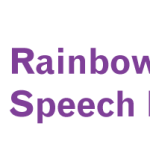TYPES OF PODD – PODD BOOK VS DEVICE

PODD can be accessed in the form of a communication book or through a device, often called a speech generating device.
There is a wide range of PODD book layouts available, and a number of different devices and applications that PODD can be accessed through. Finding the appropriate style of PODD to support an individual’s communication needs is a process, that requires consulting with a speech pathologist trained in PODD and some trialling. When determining what style of PODD to trial with an individual there are a number of factors that a Speech Pathologist will consider, these include:
- Current communication skills (e.g. What messages do they currently communicate, who do they communicate with and what environments do they communicate in?)
- Physical skills (e.g., Are they able to physically reach out and touch a symbol to select it, or do they need an alternative method of access?)
- Visual skills (e.g., Do they have functional vision difficulties and need symbols on a black background?)
- Sensory processing difficulties (e.g., Is PODD on a device which speaks words aloud overstimulating and would a PODD book be more suitable?)
The Speech Pathologist will work closely with the individual and their support system when trialling PODD styles, and obtain input from the individual’s occupational therapist and physiotherapist, when physical, vision and sensory processing skills are being considered.
Learning to use PODD takes time
The individual with complex communication needs will require lots and lots of opportunities to learn PODD before they may commence using it. It is important that they experience PODD used by a variety of people (e.g., family, educators, therapists) to express genuine messages in natural environments (e.g., home, school, community). Similar to how we would not expect an individual to be fluent in a new language after a limited amount of exposure, we would not expect an individual to use PODD as a language system, when they have only very briefly seen it used to communicate.
Some tips for modelling PODD
- Practice communicating real messages in everyday situations. Communicate with the individual using their PODD and support them to communicate with others using it.
- Avoid repeatedly asking questions using PODD, e.g., ‘Do you want more puzzle?’ and instead model things that they would be likely to say, e.g., ‘more puzzle’ or ‘need more.’
- If they provide a message on PODD, then you can expand on their message using the communication system, e.g., if they say ‘bounce’ you can expand to ‘bounce (the) ball.’
- Treat the individuals attempts to use the PODD as meaningful communication, even if it looks like they have ‘mishit’ a symbol. If you are unsure what they are trying to communicate, then use the context and what you know about the individual to determine what they may be trying to communicate and model how this can be expressed using PODD.
Written by Rhiannon Underhill – Speech Pathologist


